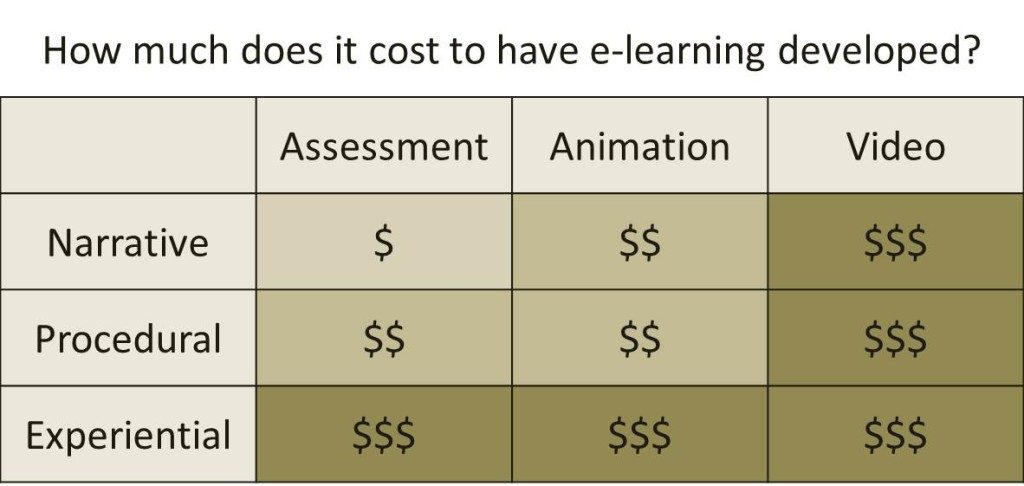As an independent e-learning consultant, I am often asked how much will it cost to engage an external e-learning vendor to develop, say, 20 minutes of e-learning.
This is a difficult question to answer, as there are lots of variables including:
- the state of the existing content that will be used to design the e-learning
- whether the e-learning needs to be responsive for use on tablets and smartphones
- visual treatment
It also depends upon the instructional approach of the e-learn, and the multimedia being used.
The figure below illustrates a sliding scale of cost determined by two variables; instructional approach and multimedia used.

A narrative approach to e-learning instructional design is essentially a ‘telling’ approach. The skill lies in the storytelling and the conciseness of the content explaining the concepts and facts. Using Self-assessment questions to evoke interest and check understanding, the average cost of design and development in the Australian market is around $200/minute or $4,000 to develop 20 minutes of e-learning.
Procedural e-learning, often used in systems training, requires demonstrations, graduated tasks and practice opportunities. It usually requires a printable quick reference guide to accompany the e-learn so that the learner has something to refer to later. The skill lies in breaking down the procedure into ‘how to’ bite-size logical steps. It usually requires animation or video to demonstrate the process. The average cost of design and development is about $500/minute or $10,000 for 20 minutes of e-learning.
Experiential e-learning is about taking the learner on a journey of discovery as decisions are made. Useful for developing judgement and changing behaviour, gamification falls into this category. The skill lies in moulding the content from right/wrong to shades of grey. Also, the multimedia programming (animation) can be extensive. The average cost of design and development is about $1,500/minute or $30,000 for 20 minutes of e-learning.
Once again, the cost estimates and development options described above are very generalised, in the interest of blog post brevity. I welcome any comments from external e-learning providers.
Over the next few posts, I will describe in more detail the development requirements for narrative, procedural and experiential e-learning.
